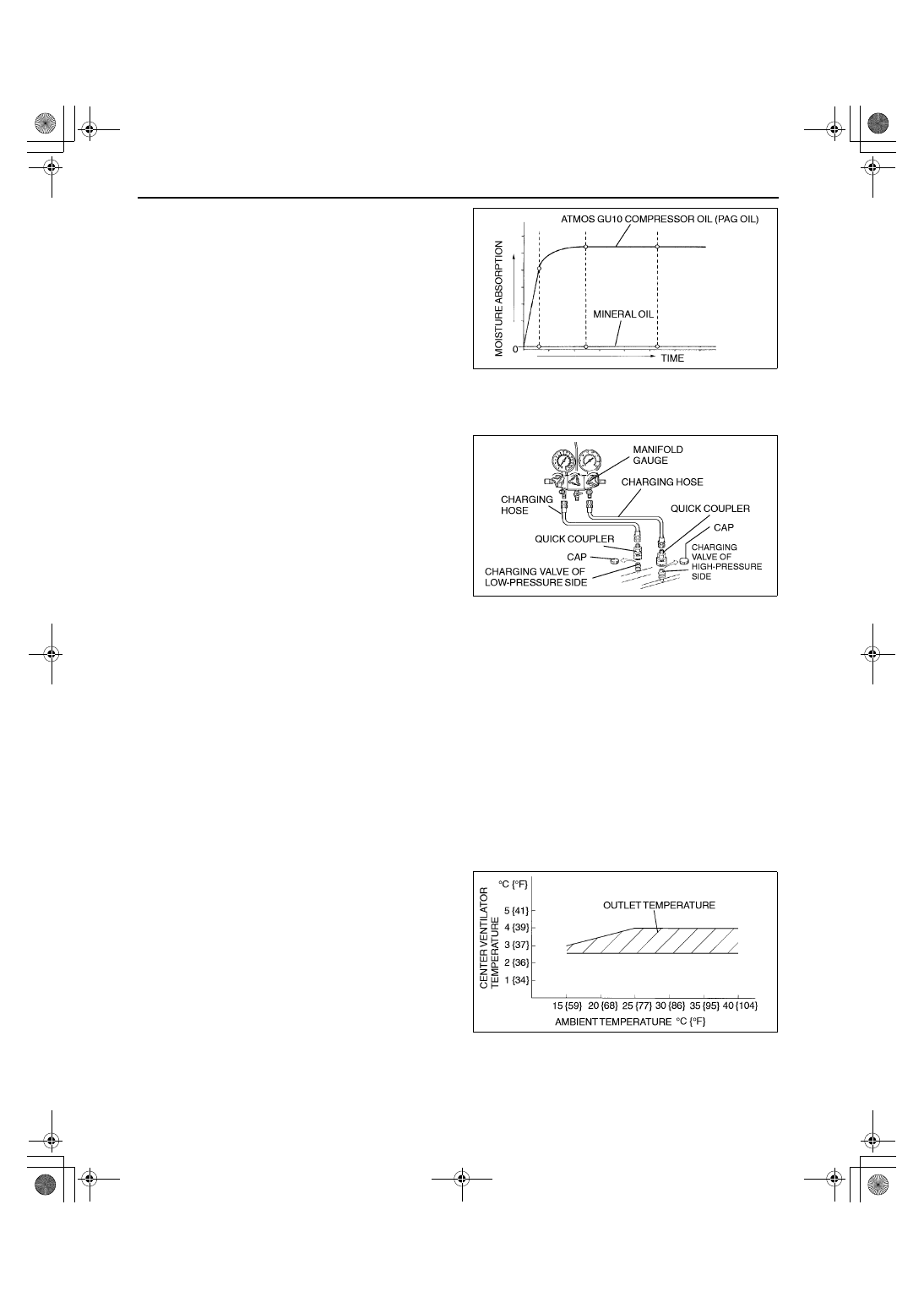Mazda Protege 5. Manual - part 274

REFRIGERANT SYSTEM
07–10–2
•
ATMOS GU10 compressor oil (PAG oil) has a
higher moisture absorption efficiency than the
previously used mineral oil. If moisture mixes
with the compressor oil, the refrigerant
system could be damaged. Therefore, install
caps immediately after using the compressor
oil or removing refrigerant system parts to
prevent moisture absorption.
End Of Sie
REFRIGERANT SYSTEM GENERAL PROCEDURES
A3U071001039W03
Manifold Gauge Set Installation
1. Fully close the valves of the manifold gauge.
2. Connect the charging hoses to the high- and low-
pressure side joints of the manifold gauge.
3. Connect the quick couplers to the ends of the
charging hoses.
4. Remove the caps from the charging valves.
5. Connect the quick couplers to the charging
valves.
End Of Sie
REFRIGERANT SYSTEM PERFORMANCE TEST
A3U071001039W04
1. Perform refrigerant pressure check. (See 07–10–3 REFRIGERANT PRESSURE CHECK.)
•
If they are correct, go to the next step.
•
If not as specified, troubleshoot refrigerant system. (See 07–03–1 TROUBLESHOOTING INDEX.)
2. Place a dry-bulb thermometer in the driver-side center ventilator outlet.
3. Close the hood.
4. Warm up the engine and run it at a constant 1,500 rpm.
5. Set the fan switch to 4th position.
6. Turn the A/C switch on.
7. Set the RECIRCULATE mode.
8. Set the temperature control to MAX COLD.
9. Set the VENT mode.
10. Close all the doors and all the windows.
11. Wait until the air conditioner output temperature stabilizes. The output temperature is stable when the A/C
compressor is repeatedly turned on and off based on the A/C compressor control of A/C amplifier.
12. Record driver-side center ventilator temperature.
13. Determine and record ambient temperature.
14. Verify that the temperature reading is in the shaded zone.
•
If the performance is not within the shaded
zone, troubleshoot the refrigerant system.
(See 07–03–1 TROUBLESHOOTING
INDEX.)
End Of Sie
X3U710WA0
W6U710WA1
X3U710WA1
1712-1U-01G(07-10).fm 2 ページ 2001年6月29日 金曜日 午前10時19分